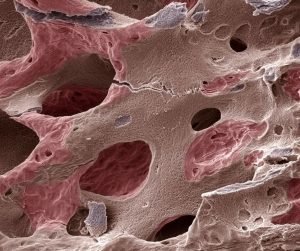Introduction to Bone Health
Bones play a crucial role in supporting our bodies, protecting our organs, and enabling movement. It’s essential to understand the dynamics of bone health to prevent potential issues such as fractures and
osteoporosis. In this blog section, we will delve into the structure of bones, the consequences of bone thinning, and why assessing bone health is vital for making informed treatment decisions.
Bones: Living Tissue of Minerals and Proteins
Bones are fascinating structures that are constantly undergoing a process of renewal and repair. They are not static but rather living tissue made up of a dynamic combination of minerals and proteins. Calcium and phosphorus are two primary minerals that provide the hardness and strength in bones, while collagen, a protein, adds flexibility and resilience. This intricate balance of minerals and proteins gives bones their unique properties, making them both strong and slightly flexible. Throughout our lives, our bones go through a process known as remodeling, where old bone tissue is broken down and new bone tissue is formed. This continuous renewal process helps maintain the integrity and strength of our skeletal system. Women are at a 5:1 ration at risk of developing osteoporosis more than men because the hormone changes that happen during menopause directly affect bone density. The female hormone oestrogen is essential for healthy bones. After menopause oestrogen levels drop which can adversely affects bone health, although hereditary factors also play a part
Consequences of Thinning Bones and Bone Health
As we age, our bones naturally begin to lose density and strength. This gradual thinning of bones is a normal part of the aging process but can become a significant concern when it leads to conditions like osteoporosis. Osteoporosis is a condition characterized by low bone mass and deterioration of bone tissue, making bones fragile and more prone to fractures. It is often referred to as a ‘silent disease’ because it progresses without any noticeable symptoms until a fracture occurs. Fractures resulting from thinning bones can have severe consequences, especially in older individuals. Hip fractures, for example, can significantly impact mobility and independence, leading to a decline in overall quality of life.
Importance of Assessing Bone Health
Assessing bone health is essential for identifying potential issues early on and implementing preventative measures to maintain bone density and strength. Regular bone density screenings, such as DEXA scans, can help assess the risk of fractures and osteoporosis. By evaluating bone health, informed decisions regarding treatment options and lifestyle modifications to improve bone strength and reduce the risk of fractures. This may include
dietary recommendations, exercise routines, and, in some cases, medications to support bone health. Furthermore, assessing bone health can be particularly crucial for individuals at higher risk of bone thinning, such as postmenopausal women, older adults, and those with certain medical conditions that affect bone density.
Understanding the complex interplay between minerals, proteins, and bone remodeling is key to maintaining optimal bone health throughout life. By prioritising bone health assessments and taking proactive steps to preserve bone density, we can safeguard against the potentially debilitating consequences of bone thinning.





